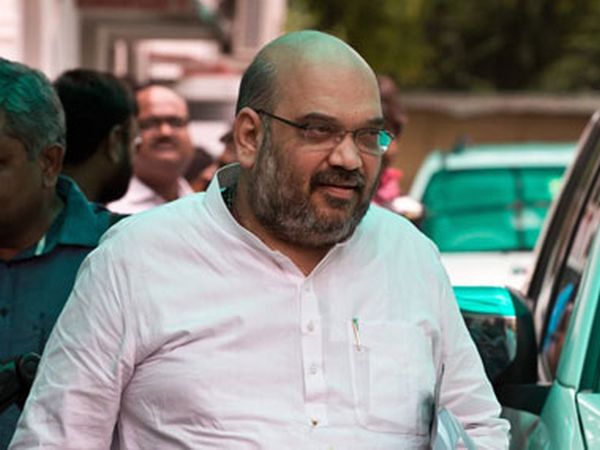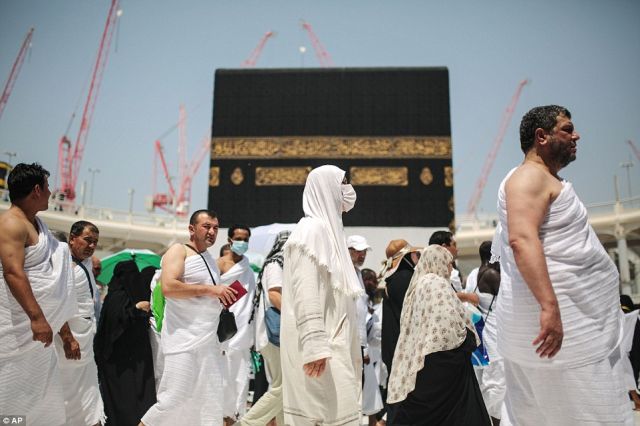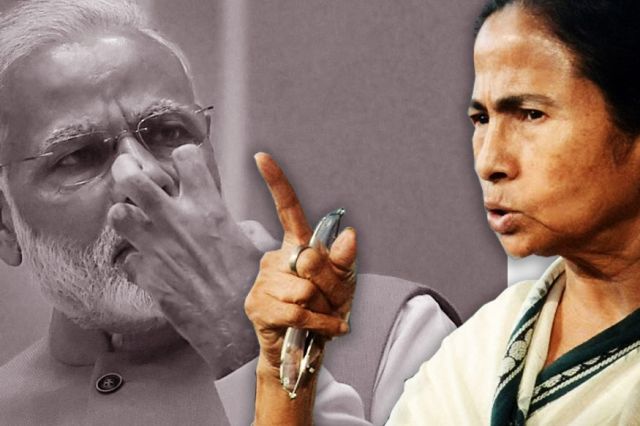
by admin | May 25, 2021 | News, Politics

Amit Shah
Panaji : The criminal case against BJP president Amit Shah should be re-opened in view of Friday’s press conference by four senior Supreme Court judges, Goa Congress state president Shantaram Naik demanded on Saturday.
In a statement issued here, Naik also said, that the case related to the death of Special CBI judge Brijgopal Harkishan Loya should also be re-visited.
“The criminal case in which the national president of BJP, was one of the accused, should be re-opened in view of the press conference held by the four judges of the Supreme Court,” Naik said.
“Similarly, case relating to the death of Brijgopal Harkishan Loya, Special CBI Investigation judge, in suspicious circumstances in Nagpur should be re-visited,” he also said.
“If it is held that the procedure prescribed for the allotment of cases cannot be questioned in Parliament, then how is that cases decided by the Government, exercising its executive powers, are admitted by the Supreme Court,” Naik asked, calling for a more transparent administrative mechanism within the apex court.
—IANS

by admin | May 25, 2021 | News, Politics
 New Delhi : Gujarat Dalit leader Jignesh Mevani on Tuesday attacked Prime Minister Narendra Modi asking why atrocities were being committed against Dalits, minorities and farmers in India and charged the BJP and RSS with instigating anti-Dalit violence in Bhima Koregaon in Maharasthra.
New Delhi : Gujarat Dalit leader Jignesh Mevani on Tuesday attacked Prime Minister Narendra Modi asking why atrocities were being committed against Dalits, minorities and farmers in India and charged the BJP and RSS with instigating anti-Dalit violence in Bhima Koregaon in Maharasthra.
“The way in which Hardik (Patel), Alpesh (Thakore) and Jignesh (Mevani) with the support of the youth in Gujarat brought the BJP down from over 150 seats (target set by BJP in Gujarat) to 99 seats… That is the reason we are being targetted,” Mevani told his Yuva Hunkar rally here.
“And this is the reason why the people of the (Rashtriya Swayamsewak) Sangh and BJP spread violence in Bhima Koregaon,” he said, referring to the violence that broke out in Bhima Koregaon near Pune last week in which one person lost his life and several vehicles were damaged.
The rally for which the Delhi Police had originally denied permission was held at Jantar Mantar, a short distance from Parliament House in central Delhi. But Mevani and his supporters shelved plans to take out a procession to the Prime Minister’s Office.
The newly elected MLA also said that when he fought elections in Gujarat he always spoke about bringing people together.
“Throughout the election campaign, we said that for 22 years the BJP followed the politics of division, while we always spoke about binding people together,” he said. “We don’t follow love-jihad.”
“We only talk about love and harmony. We will celebrate April 14 and Valentine’s Day too,” he said.
Referring to the violence that marked the 200th anniversary of the Bhima Koregaon battle in Pune last week, he asked: “Why the violence took place in Bhima Koregaon?
“I don’t have to answer it but you have to answer me… This you have to answer why Rs 15 lakh didn’t come in everyone’s account, why no jobs to youth? Why farmers were shot dead in Mandsaur? Why no justice to the Una Dalit victims? Why Najeeb Ahmed went missing? Why Rohit Vemula died? We’ll ask all these questions from you, (Prime Minister Narendra) Modiji.”
Mevani, who won from Vadgam in Gujarat in Assembly elections, said elected representatives were not allowed to speak and that was Gujarat’s model.
Further targeting Modi, Mevani said he supported the government’s “Digital India” initiative but asked the Prime Minister to ensure a technology first “so that no one is made to die inside a sewer”.
He also sought an immediate release of Bhim Army founder Chandrashekhar Azad — a Dalit leader who has been jailed and the National Security Act (NSA) slapped against him for allegdly instigating violence in Saharanpur in June last year.
Former Jawaharlal Nehru University student leader Kanhaiya Kumar said the rally had been called “to protect the Constitution and not for any religion”. He alleged that the BJP was creating communal divisions to rule.
“The BJP does not want ‘Ram Rajya’… In the fight between Allah and Ram, the victory will always go to Nathuram (Godse),” said the student leader.
Earlier, scores of people gathered around the barricaded Parliament Street for the protest march planned by Mevani.
“No permission has been given to anyone (to hold a rally),” Joint Commissioner of Police Ajay Chaudhary told reporters here.
The Gujarat lawmaker slammed the police and the central government for denying permission to the protest.
“An elected representative is not allowed to speak… This is extremely unfortunate.”
Some 1,500 security personnel in riot gear, with tear gas launchers and water cannons, were deployed on Parliament Street. As many as 42 organisation — parties, associations and student groups — took part in the rally.
—IANS

by admin | May 25, 2021 | Opinions
 By Amulya Ganguli,
By Amulya Ganguli,
For the third time since the Narendra Modi government’s assumption of office, the Dalits have come into conflict with the Hindutva brigade. The first time was in Una in Gujarat, where a group of Dalits were thrashed by saffron activists for skinning a cow, a traditional occupation of the “untouchables”.
The second time was in Hyderabad central university where a standoff between members of the Ambedkar Students Association and the Akhil Bharatiya Vidyarthi Parishad (ABVP), the Bharatiya Janata Party’s (BJP) student wing, led to the suicide of a Dalit student, Rohith Vemula.
Now, perhaps the most serious of all these incidents has taken place in Maharashtra following the objections of Hindu Right organisations to the celebrations by Dalits of an 1818 battle in the village of Koregaon on the banks of the Bhima river near Pune in which the “untouchable” Mahar soldiers of a British army defeated the upper caste Marathas.
Considering that these celebrations have been held for decades without the rest of the country noting it as an event of great significance even when B.R. Ambedkar participated in them in 1927, it is noteworthy that they should have led this time to a violent outbreak which spread from Pune to Mumbai and other Maharashtra towns.
Evidently, the Hindu Right groups have been emboldened by the BJP’s political ascendancy to decide to stop an instance of Dalit assertion, not least because it targeted the upper caste Peshwa rulers of the state of the 19th and earlier centuries.
The episode was a much larger version of the clash which took place in Saharanpur, Uttar Pradesh, between Dalits and the Rajputs in May last year when the former objected to the processions taken out by the Rajputs to celebrate the birth anniversary of Maharana Pratap. A few weeks earlier, the latter had objected to the celebrations of Ambedkar’s birth anniversary by the Dalits.
What these episodes show is that unlike in the past, the Dalits are unwilling to commemorate their days of pride in a low key and are also ready to object to the noisy festivities of the upper castes.
The Bhima-Koregaon event may have kindled the ire of the Hindu Right all the more because of the unapologetic participation of the Dalit soldiers with the British army to defeat a Hindu ruler.
This is something which evidently riles the ultra-nationalists associated with the saffron brotherhood at a time when they are engaged in rewriting history to suit their own fads and prejudices as is evident in their objections to a yet-to-be-released film on a fabled Rajput queen.
In such a time of triumphal chauvinism, the Dalit-East India Company collaboration is obviously unacceptable to the Hindu Right, especially when Ambedkar had noted that the “untouchable” Dusads had helped Robert Clive to win the battle of Plassey in 1757, just as the “untouchable” Mahars, a community to which Ambedkar himself belonged, had helped the “foreigners” to win in Koregaon.
Not surprisingly, Ambedkar had not been a favourite of the BJP till recently when the party changed its mind about him after realising the high political cost of alienating both the Muslims and Dalits.
However, the party’s “mann ki baat” or speaking one’s mind about the Dalits was succinctly expressed by Arun Shourie, who was a minister in Atal Behari Vajpayee’s government, in his book, “Worshipping False Gods”, in which he said that “there is not one instance, not one single solitary instance, in which Ambedkar participated in any activity connected with the struggle to free the country”.
Considering that there are not too many instances of the Rashtriya Swayamsevak Sangh (RSS) participating in “any activity” to free the country, Shourie’s charge cannot be taken seriously. But it does underline the traditional Brahmin-Bania outlook of the Sangh Parivar towards the Dalits and their foremost leader.
The objections voiced by the RSS chief, Mohan Bhagwat, about the continuing reservations for Dalits in government jobs and educational institutions also denote the saffron attitude which is resented by the latter.
The BJP has tried to make amends by nominating a Dalit, Ramnath Kovind, as the country’s President, but it is unlikely to make any difference to the longstanding antipathy of the community towards a party whose hardliners swear by the Manusmriti, an ancient book which was once “ceremonially” burnt by Ambedkar along with hundreds of his followers for its anti-Dalit pronouncements.
For the BJP, the latest confrontation with the Dalits carries a disturbing message on the eve of elections in as many as eight states this year, including those where the party is expected to face the anti-incumbency factor.
While the BJP’s success in winning 69 of the 85 reserved seats in Uttar Pradesh last summer showed that the party was gaining the support of the Dalits, the trend was not in evidence in the recent Gujarat elections where, among other things, the victory of the previously unknown Jignesh Mewani, by a margin of 19,000 votes, pointed to the disaffection of the Dalits with the saffron organisation. Mewani emerged from nowhere after the Una incident to become a well-known figure in today’s politics.
There is little doubt that farily large sections of the Dalits, who make up 16.6 per cent of the population, as well as Muslims, who comprise 14.2 per cent, harbour reservations about the BJP, notwithstanding its attempt to placate at least the Muslim women by bringing the triple talaq bill. The BJP cannot but be deeply worried, therefore, about the impact of their alienation on the forthcoming elections.
(Amulya Ganguli is a political analyst. The views expressed are personal. He can be reached at amulyaganguli@gmail.com)
—IANS

by admin | May 25, 2021 | News, Politics
 New Delhi : In a bid to empower Muslim women, the government has changed the law by permitting them to travel for the annual Haj pilgrimage without any male attendant, Prime Minister Narendra Modi said on Sunday.
New Delhi : In a bid to empower Muslim women, the government has changed the law by permitting them to travel for the annual Haj pilgrimage without any male attendant, Prime Minister Narendra Modi said on Sunday.
“I noticed that if a Muslim woman wanted to go for the Haj pilgrimage, they cannot go without a ‘Mahram’ (a male guardian),” Modi said in 2017’s last edition of his radio programme ‘Mann Ki Baat’.
“And when I enquired about it, I came to know that it was we who have have restricted them for going alone for the Haj. This practice is not followed in many of the Islamic countries,” he said.
Modi added that the Minority Affairs Ministry has removed this restriction and will now allow the Muslim women to travel to Haj without a male attendant.
“Till date, 1,300 women have applied to travel for the Haj without any Mahram,” the Prime Minister said, adding that “they should get equal opportunity as the men get”.
—IANS

by admin | May 25, 2021 | News, Politics
 By Sirshendu Panth,
By Sirshendu Panth,
Kolkata : Keeping up a strong anti-BJP rhetoric, West Bengal’s indefatigable ‘Didi’ gunned for Prime Minister Narendra Modi through the year, lacing her speeches and social media postings with sarcasm and choice words as her government clashed with the Centre on various issues.
From mythology to ancient Indian history, Trinamool Congress supremo Mamata Banerjee left nothing untouched in letting loose incessant verbal volleys at Modi, while the Bharatiya Janata Party (BJP) continued to increase its vote-share in various by-polls and local body elections in West Bengal.
As the BJP tried to emerge as a viable alternative to the Trinamool, Banerjee in turn endeavoured to project herself as the most prominent opponent of the Hindutva brigade nationally.
The feisty leader networked with regional leaders opposed to the Sangh Parivar — the ideological parent of the BJP as well as several right-wing outfits — and formulated decisions and actions that could give her brownie points over the central dispensation and its propelling force.
She fired on all cylinders, targeting Modi’s key policies like demonetisation and the Goods and Services Tax (GST) while trying to exploit burning issues like sliding economic growth, rampant intolerance, the beef ban and cow vigilantism.
However, it was her colourful and strident attacks on Modi that grabbed the spotlight.
If she likened Modi to the greatest Sanskrit poet and dramatist Kalidasa, it was not because of the writer’s literary prowess but only a reference to an oft-told story of him “lacking intelligence as a youngster — cutting the branch he was sitting on”.
“All institutions (of the nation) are under attack. This is a dangerous game. The PM is behaving like Kalidasa, trying to cut the branch he is sitting on,” Banerjee remarked.
During another aggressive speech, Banerjee drew a parallel between Modi and demon king Ravana of the Ramayana epic.
“He claims that he has broad chest and shoulders. Even Ravana had broad shoulders. And he also had 10 heads,” she said, alluding to Modi’s drumbeating that he has a “56-inch chest”.
On another occasion, she predicted that “Barda” (elder brother) will have to bow out of office after the 2019 parliamentary polls.
Addressing a public meeting in Bankura district, Banerjee raised the pitch further, dubbing the Modi government “deaf and dumb”. But a separate barb was reserved for the Prime Minister.
“He used to call himself a ‘chaiwala’ (tea seller) before. Now he has become a millionaire ‘Paytm-wala’ (one who endorses e-wallets like Paytm).”
Demonetisation, to her, was Modi’s “shameless flop show” that she dismissed on Twitter as “visionless, missionless and directionless”.
Not in a mood to let go of any democratic mode of protest, she even knocked on the door of then President Pranab Mukherjee, urging him to “save the country from the mess” and sought a “national government” minus Modi. Banerjee was ready to accept another BJP leader at its helm and went to the extent of naming L.K. Advani, Rajnath Singh and Arun Jaitley as being acceptable.
While backing GST, Banerjee took the Modi government to task for rolling out the new regime with “disastrous hurry” on July 1. She called the step “another epic blunder” of the Centre.
The CBI probes into the multi-billion-rupee Saradha Ponzi scam, Rose Valley Ponzi scam and Narada sting footage controversy — in which a number of Trinamool leaders were implicated — were also bones of contention between the Trinamool and the BJP.
While Banerjee accused the central agencies of acting out of “political vendetta” on the BJP’s directions, the saffron party said it was an inquiry ordered by the Supreme Court.
Going ballistic, Banerjee threatened to slap defamation cases worth crores of rupees if the CBI did not proceed impartially.
The political battles between the Trinamool regime and the Centre even stretched to observance of red letter dates like Independence Day and Teachers Day.
When the Union Ministry of Human Resources Development (MHRD) sent a circular to the states recommending a structured format promoting Modi’s pet “Swachh Bharat Mission” during Teachers’ Day celebrations in schools, the Mamata government shot off a counter-circular to schools saying the date needed to be observed with due reverence and solemnity as in “earlier years”.
Ahead of Independence Day, the MHRD had issued a circular specifying “additional activities”. But the state government came up with a directive asking the schools to “stop all preparations” for celebrating the day in the MHRD format.
With the Congress weakening, Banerjee kept herself busy attempting to strengthen ties throughout 2017 with prominent political leaders in the anti-BJP domain, particularly those from the regional parties.
She has been following many of them on Twitter, or exchanging pleasantries through tweets with the likes of ex-Uttar Pradesh Chief Minister Akhilesh Yadav, senior Jammu and Kashmir National Conference leaders Farooq Abdullah and Omar Abdullah, BSP chief Mayawati and DMK leader M.K. Stalin. She even met Shiv Sena chief Uddhav Thackeray, a BJP baiter despite being an ally, though her party’s views on religion and secularism were diametrically opposed to those of the Sena.
Though Banerjee has stressed on “collective leadership” to challenge Modi, she gave enough hints at a media conclave last month that she is not averse to taking the lead in bringing together opposition parties on a single platform against the BJP in 2019.
(Sirshendu Panth can be contacted at s.panth@ians.in)
—IANS





